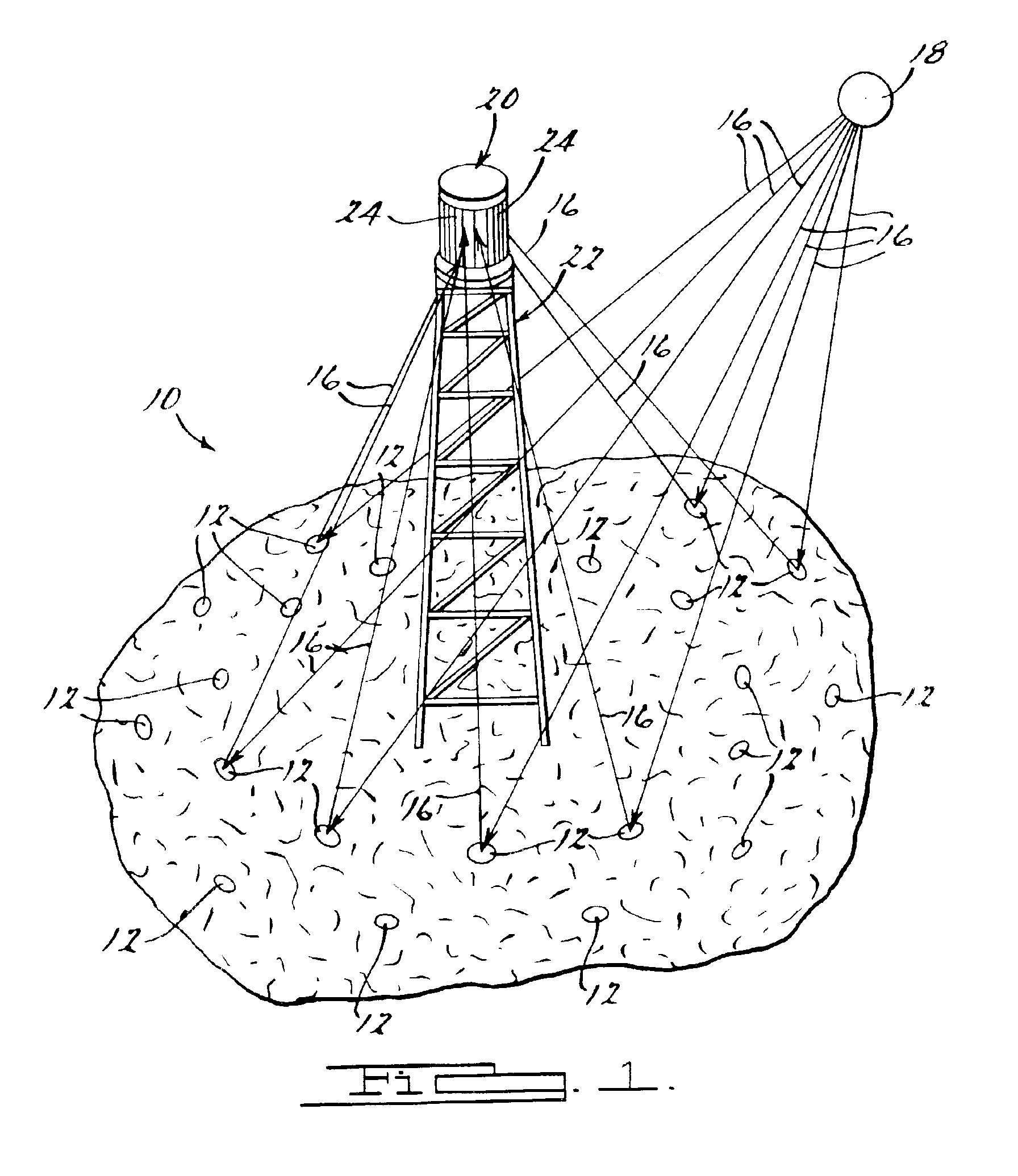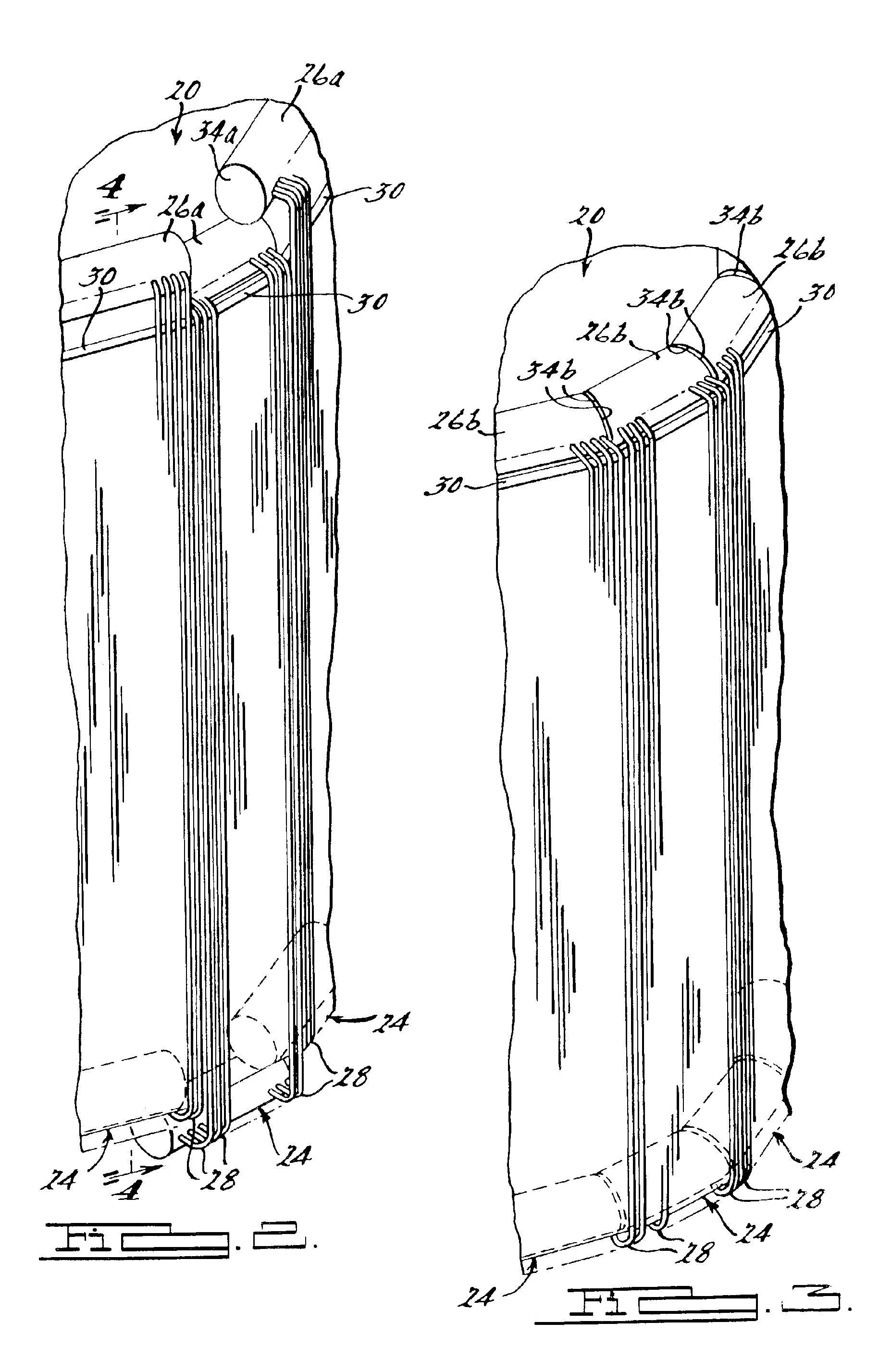Solar central receiver with inboard headers
a solar receiver and header technology, applied in the direction of machines/engines, mechanical equipment, light and heating equipment, etc., can solve the problems of bending the tubes in this manner to fill the gaps, loss of absorbed solar energy and possible damage to the interior components of the solar receiver, and difficult direct insulate the headers that face outward toward the concentrated solar flux
- Summary
- Abstract
- Description
- Claims
- Application Information
AI Technical Summary
Benefits of technology
Problems solved by technology
Method used
Image
Examples
Embodiment Construction
[0017]The following description of the preferred embodiments is merely exemplary in nature and is in no way intended to limit the invention, its application, or uses.
[0018]Referring to FIG. 1, a solar power plant according to the present invention is generally shown at 10. The solar power plant 10 includes a plurality of heliostats 12 positioned about a heliostat field 14. The heliostats 12 are generally reflectors, preferably in the form of mirrors, that reflect a plurality of energy rays 16 originating from a solar source 18. The heliostats 12 reflect the solar energy rays 16 from the solar source 18 upon a solar receiver 20.
[0019]The solar receiver 20 is preferably cylindrical and positioned atop a tower 22. The tower 22 is preferably located at the approximate center of the heliostat field 14. Mounted about the solar receiver 20 are a plurality of solar receiver panels 24. As seen in FIGS. 2 through 5, each receiver panel 24 is generally comprised of two headers 26 connected by ...
PUM
 Login to View More
Login to View More Abstract
Description
Claims
Application Information
 Login to View More
Login to View More - R&D
- Intellectual Property
- Life Sciences
- Materials
- Tech Scout
- Unparalleled Data Quality
- Higher Quality Content
- 60% Fewer Hallucinations
Browse by: Latest US Patents, China's latest patents, Technical Efficacy Thesaurus, Application Domain, Technology Topic, Popular Technical Reports.
© 2025 PatSnap. All rights reserved.Legal|Privacy policy|Modern Slavery Act Transparency Statement|Sitemap|About US| Contact US: help@patsnap.com



